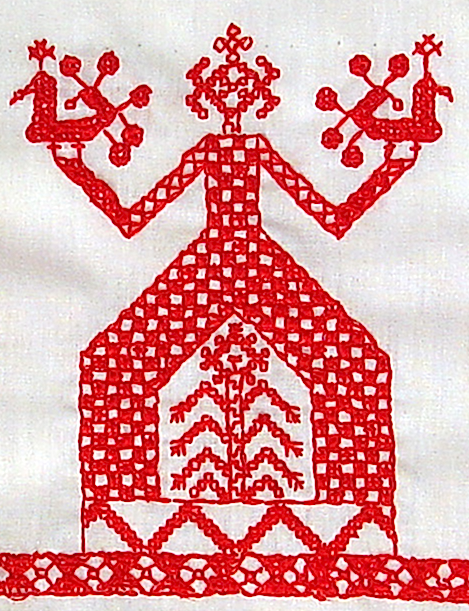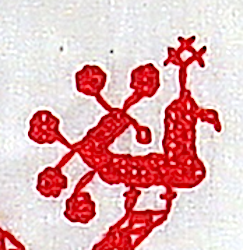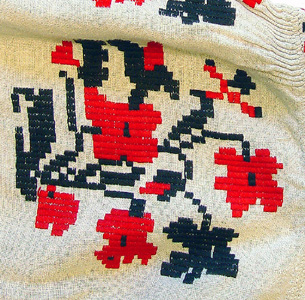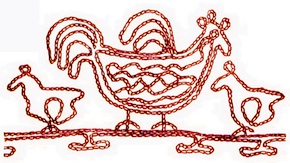|
Embroidery >>>
Dictionary of symbols >>> Stitches Used in Traditional Russian Embroidery. An overview. |
||||||
|
The cliche of traditional Russian needlepoint is a towel embroidered with tacky red cocks (in the cross-stitching technique). This is not true (at least, not completely true). Speaking of cocks (and their color) – there are a couple of paragraphs here at the web-site telling about traditional symbols and color palette, so we do not repeat these info here. This particular entry is about embroidery techniques used by village people. Let's go backwards and start from cross-stitching. This technique appeared in Russian villages after 1850s only, therefore, it cannot be named neither 'Russian' nor 'traditional' at all. First, Cross-stitching was adopted by farmers from nobility's and city people's needlepoint. And, after 1870s, Genrich Brokar with his 'soap cross-stitching designs' made a fatal hit to the traditional craft. Genrich Brokar was a Russian-French businessman. In 1870s, he launched his soap-making manufacture in Russia. To increase his market-share by attracting village people, he collected the most popular folk designs, and the team of professional artists 'corrected' these 'clumsy rural pictures' and transformed them to cross-stitching embroidery graphs (of course, that 'correction' distorted ancient sacred signs and turned them into something 'pretty'...). Brokar offered one free graph along with any piece of his product. And, villagers were enticed by these 'corrections' of traditional designs… It needs to be noticed that Ukraine and neighboring regions of Southern Russia adopted cross-stitching significantly earlier than the rest of the country, and in much more natural way. Ukrainians simply borrowed this technique from neighboring European Slavs (Poles, Bulgarians and others). Despite the non-traditional origin of Cross-stitching, it perfectly fits the group of 'counted stitches' - needlepoint techniques, which use the natural structure of a cloth as a base grid for making designs. Ethnographers know a lot of 'counted stitches' applied by Russian village people. Some stitches were spread widely around the whole country, whereas others were strictly local. Three most commonly used techniques are described below.
In addition to 'counted stitches', village people used so-called 'free stitches' also (e.g., any type of a contour stitch, regular (non-counted) satin stitch, cross-stitching over waste-canvas). 'Free stitches' allowed making curves, circumpherences, waves, and any other 'free' forms. In different regions of Russia, various free techniques wer used. And, that is much more interesting, 1) the time of 'free stitches''s appearance varies in different regions, 2) 'free stitches' were adopted from different sources.
Other 'free stitches' were adopted by Russians from traditional craft of Ural / Siberia herders, and of Central Asia peoples. Naturally, these stitches existed only locally (they've never been spread around other parts of the country). | ||||||
Sources (in Russian)
|






